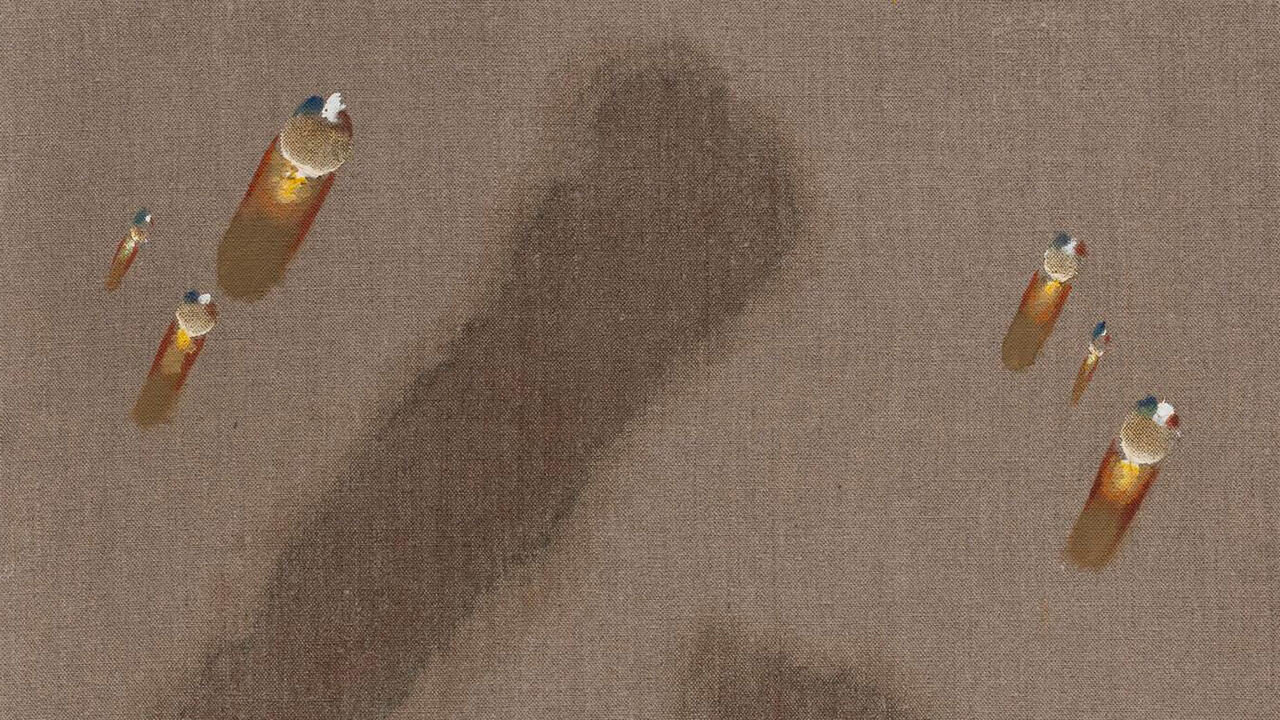Les Années Pop
The Pompidou seems to believe in fun-fair exhibitions in which art works and concepts are put on a merry-go-round, shaken rather than stirred, and enmeshed in maze-like, colourful displays. 'Les Années Pop' (The Pop Years) exemplified this approach, boasting a liveliness that set it apart from a straightforward survey of Pop art, as much as from a panorama of Pop culture. In an undecided way it tried, in fact, to do a bit of both, and the result was an awkward idealized portrait of an epoch (1956-1968) evoked in the form of a gesamkunstwerk. Recordings by John Cage and the Beach Boys played beside paintings by Allan Kaprow or contemporary design objects; colourful projects and models by Archigram and Cedric Price jostled with assemblages by Martial Raysse; and films were scattered around the place, occasionally making the daring junk art of the early 1960s look a little lost. As a rule, a film always moves faster than a painting, even if it's a Robert Rauschenberg 'combine' or Niki de Saint Phalle's Tir (Shoot, 1961). This was one of the lessons to be learnt from the jerky display that crammed a plethora of objects into a space which was far too small to let them breathe.
This was true even of the didactic theme rooms that recalled three-dimensional textbooks. The 'object' section featured British Pop, French Nouveau Realisme and American pre-Pop with works as diverse as Lucas Samaras' fetishistic assemblages, a Jasper Johns Flag (1955), a nightmarish Tetsumi Kudo assemblage of enlarged body-parts and Robert Whitman's Shower (1963), which hung near more mainstream pictures by Richard Hamilton, David Hockney, Allan Jones, Peter Blake and Eduardo Paolozzi and objects by Jean Tinguely, Niki de Saint Phalle, Arman, Christo and Daniel Spoerri. It nonetheless separated each country, apart from a few unhappy confrontations such as John Chamberlain's romantic and painterly sculptures with César's one-liner car compressions.
Due to their selection of early and often lesser-known works, the two sections concerned with the influence of advertising and comics were more successful. In the latter, oddities by Valerio Adami, Peter Saul, Mel Ramos and Ovyind Fahlström, stood firmly beside a canonical 1960 Warhol Superman and a no less epoch-making 1961 Liechtenstein Mickey Mouse. Beside these rigorously selected rooms, the design sections, packed with objects from everyday life, aimed to empathize with the viewer (who doesn't remember those apple-shaped ice boxes and inflatable armchairs?) and evoke a nostalgia for an idealized era rather than really explore the complexities of the period.
Indeed, its simplistic view of a positive ethos governing the bulk of the 1960s, which left political conflict to the later years (evoked in the final room), was one of the greatest shortcomings of 'Les Années Pop'. This simplification explained retrospectively why the more politically aggressive objects, and in general the more complex works, were either badly displayed or left out altogether. Exceptions to this were three paintings from 1965 by Gerhard Richter.
The show's masterwork, a huge Warhol, Orange Car Crash (1963), was jammed into a shoe-box sized room, between a couple of Roy Lichtenstein's. Luckily these didn't disturb the grandiose effect of the blank monochrome right-half of the Warhol, which stared as glaringly at you as the repeated image of the accident. By comparison, James Rosenquist and Fahlström felt almost absent.
Claes Oldenburg was pretty much neutralized by the reconstruction of his first uptown Green Gallery show of 1962, wrongly labelled The Store in reference to his earlier, more subversive, downtown environment. The subtleties of Yves Klein - the mastermind of the Nouveaux Réalistes - must have been too great to be included, and Alain Jacquet's caustic La voix de son maître (His master's voice, 1966) was hung in a corridor. However, it was the works that lurked at the edge of the colourful surface discourse of the show that were some of the most fascinating
- Archigram's frightening Plug In City (1962-64), for example; Vostell's virulent Auschwitz assemblages Das schwarze zimmer (The Black Room, 1958-59); and Jean-Jacques Lebel's disquieting homage to the Marquis de Sade, 120 minutes dédiées au divin Marquis (120 minutes Dedicated to the Divine Marquis, 1966). Many of these 'dark places' of the 1960s appeared in the films, from Andy Warhol's Blow Job (1964) to Bruce Connor's A Movie (1958) and they made 'Les Années Pop' a disturbing, multilayered experience. Experimental cinema provided one of the most interesting sub-narratives of a show whose final, rather disheartening premise seemed to be how an avant-garde art movement became a consumable style in the space of a decade.
















